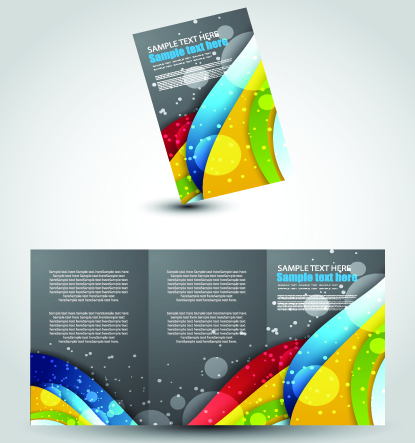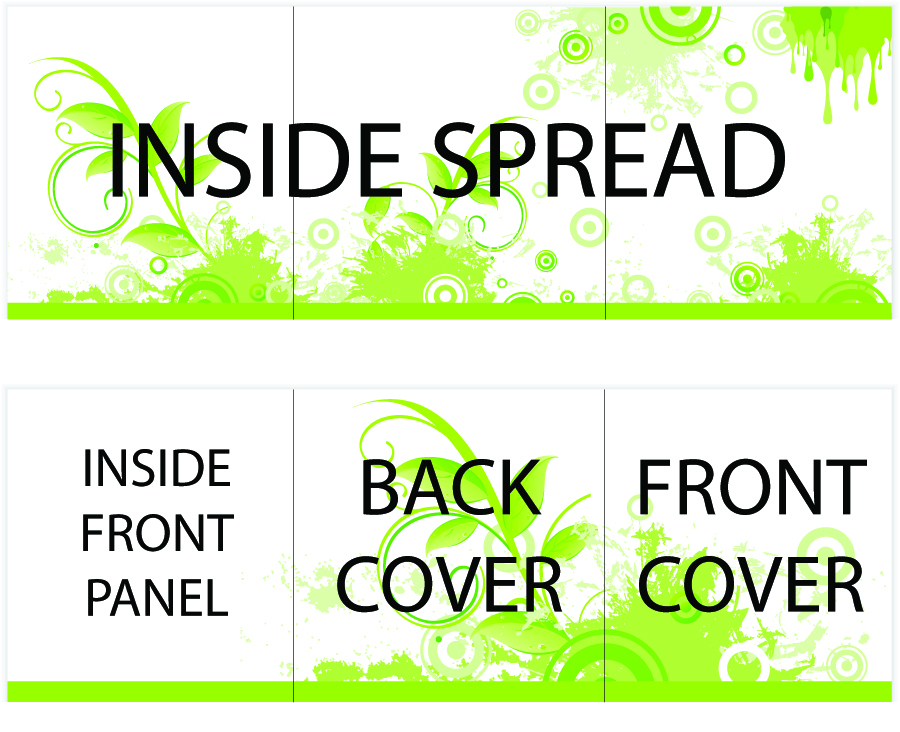An Essential Guide to Persuasive Brochure Copywriting
 You wouldn’t buy a product without seeing it first, but you also wouldn’t buy something you know nothing about. Even though a good company brochure is visually-oriented, it does more than just display attractive pictures. It uses words to influence its audience. That’s why the value of brochure copywriting shouldn’t be ignored.
You wouldn’t buy a product without seeing it first, but you also wouldn’t buy something you know nothing about. Even though a good company brochure is visually-oriented, it does more than just display attractive pictures. It uses words to influence its audience. That’s why the value of brochure copywriting shouldn’t be ignored.
A brochure’s writing can (and should) do more than just disseminate information. It should convince the reader to do something: buy a product or service, visit a location, make a call, or any other action you desire. If you’re wondering how to write persuasive brochure content, simply follow these tips and techniques.
-
Choose the best layout
When you write a brochure, you’re working with a limited amount of space. You have to include large amounts of information, plus accompanying images and graphics. If you create copy without planning for these other elements, you won’t have any idea how much text it takes to fill the brochure.
So before you start “writing blind,” lay out your brochure. Decide where the graphics will go, and block out the areas where you plan to place text. This will give you an idea of how much you need to write and whether you have too many graphics (or not enough).
Now is a great time to seek professional input on your brochure. When you use our print design services, you’ll work with our team of graphic designers to create the perfect brochure layout.
-
Find your purpose
Before you begin writing your brochure, you should decide why you’re making a brochure in the purpose and how it will be used. Who is your target audience, and how will they acquire your brochure?
The purpose of your marketing collateral should inform how you write your brochure. For example, a leave-behind brochure should summarize and build upon the presentation that precedes it, while a response-to-request brochure should address the specific needs of the requester.
Your shouldn’t try to make your brochure a jack-of-all-trades. Identify a single purpose and stick with it.
-
Push benefits more than features
Writing about benefits rather than features is a golden rule of copywriting. Customers usually aren’t as interested in a product’s bells and whistles as they are in how the product benefits them. When writing a brochure, there’s a little extra wiggle room for features since the reader might actually want some background information about your business.

A feature like "four-wheel drive" isn't very compelling if the reader doesn't know what benefit they'll get as a result.
Still, your first priority should always be showing how your product will benefit the reader. Listing features is okay, but try to tie each feature to a benefit. For example, four-wheel drive (a feature) provides better vehicle control in the winter, which means added safety (a benefit).
-
Provide proof
Benefits are important, but it’s not always enough just to say “our widget makes you healthier.” Many prospects will require proof before they’re confident enough to make a purchase. If you can support your claims with compelling content and facts (“our widget contains 40% less cholesterol”), it will make readers more likely to buy.
Another way to provide proof is with testimonials. If you can provide a credible, trustworthy source that endorses your product, it may persuade even the most stubborn of prospects.
-
Find your voice
How your write your brochure will depend largely on the image you want to put forth. Is your company offbeat, traditional, edgy, or poetic? Once you’ve found your brand’s personality, it will be much easier to write in that voice.
If you’re unsure what voice to use, a conversational tone is generally a good choice for your brochure copywriting. It sets your prospect at ease and makes them want to continue reading. Keep it light, friendly and (most of all) consistent.
-
KISS (Keep It Simple, Stupid)
Try to write your brochure in simple terms, making it accessible to as many people as possible. Avoid complicated, technical jargon and passive voice language. If it’s absolutely necessary to include technical info in your brochure, you might want to restrict it to a chart or diagram rather than let it interrupt your written message.
Also remember to keep your brochure copywriting organized in a logical, readable way. Headlines, bullet points and line breaks are your friend; use them to split large paragraphs into easily digestible bites. Short sentences and paragraphs will give your brochure an easy, effortless flow.
-
Call to action
It might seem like a no-brainer, but you need to tell your reader what you want them to do. The call to action is occasionally overlooked in copywriting, but it’s arguably the most important part of your company brochure. It doesn’t necessarily have to tell the reader to buy your product; it could simply lead them to your website or location.
A call to action should be placed somewhere highly noticeable and should lead with a key benefit. For example, “find out how to lose weight and gain energy at our website” will be more effective than simply “visit our website.”
Trifold Brochure Copywriting
A popular form of print collateral is what’s commonly known as the trifold brochure. This is actually a misnomer because it’s only folded two times, not three, effectively giving you six panels to write on.

Your brochure copywriting should be spread out across these panels in a way that makes logical sense. Here are a few tips and ideas for how to organize your writing on a trifold layout.
Front Cover: This is the first thing that your target will see, so it needs to compel them to open the actual brochure. Your company or product name should obviously be featured here (as well an an eye-catching graphic), but don’t be afraid to make a bold statement. Offer something valuable and specific; not just “More info inside!” but “Save 10 hours a week [when you use our widget].”
It’s a good idea to include a prominent call to action here. If you want people to visit your website, for example, be sure to place the URL somewhere where it can easily be seen.
Inside Front Panel: So you’ve drawn them in with an intriguing cover. Now set the hook. This is where the most vital and appealing parts of your sales pitch should go. Use persuasive writing techniques to show your prospect the benefits they’ll receive if they buy your product or service.
Inside Spread: Here you can support your benefits with further evidence. You should also identify and address any major objections your prospect might have. These are roadblocks such as customer disbelief or a high price; anything that may prevent a prospect from making a purchase. Use facts, testimonials and emotional copywriting to quell these objections as much as possible.
Your goal is to persuade more than inform, but a little information doesn’t hurt here. A marketing brochure is one place where listing the precise features of your product or service might be acceptable. Just stick to the absolute essentials, the things that a customer might find genuinely useful. Depending on the purpose of your brochure and the nature of your business, this could also be an appropriate spot for a price list, map or survey.
Back Cover: This is the area that people are generally least likely to read. It’s an excellent place to list your company’s contact info, but this is also an opportunity to add value to your brochure.
Consider making the back of your brochure a coupon for a discount at your business. This encourages people to hold on to your brochure and maybe even pass it on to others.
Conclusion
Without solid brochure copywriting, even the most gorgeous designs won’t have much effect on a prospect. Good writing blends style and substance to push the reader in a specific direction. With technique and planning, you can write a brochure that increases business instead of just taking up space.
Posted in Copywriting
Don`t neglect your friends, share this right away.





Leave a Reply